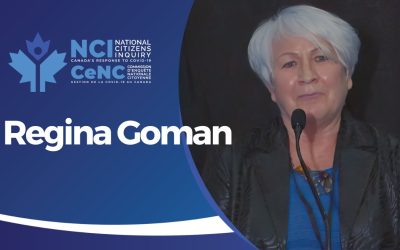Like a bad jar of pea mushy, the 1993 Liberal Red Book promise of a national daycare program has come back up again. This week Jane Stewart, the federal Human Resources Minister, and her provincial counterparts agreed to solve the childcare crisis by spending the $900-million promised in the February federal budget. Of course they had to create a crisis first.
The nub of the childcare crisis is the claim that there are not enough licensed daycare spaces in the country. Governments, federal and provincial, must therefore swing into action to fill this need. But is there really an undersupply? Existing research doesn’t illuminate that question in any scientific way, despite all the talk about waiting lists.
And even if Canadian parents want but can’t find places for their children in the regulated sector, government is hardly the place to look for solutions. Despite all the earnest statements this week in Toronto at the ministerial meeting, the Feds and provinces have spent the last four decades stifling new supply. If we really want to increase childcare capacity in this country, the best place to look for guidance is the Australian stock market.
The month before the federal budget, the ever-worried Martha Friendly, co-ordinator of the Childcare Resource and Research Unit at the University of Toronto trotted out her latest evidence that the nation’s childcare system has gone to hell in a diaper bag. “Canadian Child Care Deteriorating,” screamed her report’s media release headline. Backing up this claim was the factoid, endlessly repeated by journalists, that only 12% of Canadian children have access to regulated childcare. Crisis time!
Of course this is not research, but a massive canard. The 12% figure was arrived at by dividing the number of licensed daycare spots in Canada by the total number of children aged 0-12. As any parent will tell you — and I am any parent — it is an absurd proposition to demand that every child under the age of 13 be placed in licensed daycare.
If the study was attempting to divine an actual shortage of daycare spaces, the appropriate thing would have been to ask parents what they wanted. Regulated daycare is only one option. According to a 2001 StatsCan study, the preferred method of childcare in Canada is to pay someone — a nanny, relative or neighbour — to come into the home. Come to think of it, some moms and dads have even been known to have a go and stay home to look after the kids.
To the CRRU, however, any parenting decision that does not entail regulated daycare becomes evidence of the need for government action. The childcare crisis of Friendly and Co. is not so much a physical shortage of daycare spaces as an ideological plot to institutionalize the nation’s children from birth.
But lets set aside this frightener of an idea for a moment and get back to practical matters. It is entirely possible that parents do want to increase the number of regulated daycare spaces in the country. Perhaps those tearful anecdotes that preface nearly every article on daycare — of parents forced to leave their children with neighbours because there was no space at the local Tiny Tots — reflect a national need, despite evidence that parents prefer to raise their children at home. How should governments go about increasing the number of formal daycares? Banning new entrants and squeezing existing providers out of business would seem odd strategies to achieve such a policy goal, but this is precisely what most governments have been doing for decades.
Since the 1960s, provincial and federal governments (those same governments that claimed this week they have the solution to the childcare crisis) have been limiting the number of daycare spaces in the country by waging war on the for-profit sector. Under the old Community Access Program of federal grants, for instance, money for childcare was only made available to not-for-profit daycares. To its credit, only Alberta told Ottawa to stuff it and created its own fairer program that included for-profit centres.
In Ontario the NDP Bob Rae government bullied many owners of for-profit daycares into abandoning their ownership rights and tried to squeeze out those who remained by mandating that all new public schools contain a not-for-profit daycare. In Saskatchewan only parents whose children attend non-profit daycares can access government subsidies, which has entirely wiped out the province’s privately owned childcare sector. (Despite this success, the CRRU’s own data show there are twice as many daycare spaces in private sector-loving Alberta, as a percentage of child population, as in socialist Saskatchewan.)
Quebec went to the trouble of banning any new privately run daycare while it rolled out its Euro-style universal $5-a-day system that sucks $1-billion out of the provincial budget annually. Last year, after five years of experimentation, the government found there were 60,000 families waiting for the ridiculously under-priced program — perhaps the most convincing evidence available of an actual childcare crisis in the country. And yet Quebec is the model by which the CRRU judges all other provinces.
All told, the national campaign against commercial daycare has been a roaring success. Where 30 years ago three-quarters of daycares were privately owned and the rest non-profit, today those figures are reversed. With the loss of the private sector, goes the ability to respond quickly to changing demands.
So what explains the hate most governments and childcare researchers have for private sector daycares? The same basic argument that enervates our national health-care system — that some services are so important they can only be delivered in such a way that distorts the market, limits supply and guarantees a continual crisis. Lots of daycares run by charities make surpluses; call it a profit, however, and it’s an exploitation of children. To this Marxist complaint the CRRU adds criticisms that the for-profit sector pays lower wages to staff with fewer credentials, and has fewer resources at its disposal. These complaints are largely the result of provincial and/or municipal policies that skew wage subsidies and other funding programs to not-for-profit centres while simultaneously capping fees for the industry.
Both private and not-for-profit licensed daycares operate under exactly the same provincial regulations on staffing, space and quality. And if government regulations ensure a safe environment for children in those non-profit daycares so beloved by the CRRU, why are these same rules somehow insufficient when applied to commercial operators? The issue of who owns the factors of production is clearly a red herring. If Canadians want more licensed childcare spaces the solution is simple: Stop the ideological war and let daycare operators open more daycares.
In Australia the formal childcare scene is dominated by entrepreneurs, who provide 72% of the spaces and most of the growth. A key reason is that federal and state governments do not discriminate between non-profit and for-profit providers in their programs. And there are no shrieks of a childcare crisis in that country, despite the scary stories told by the CRRU.
The private provision of childcare has been so successful in Australia that it has caught the attention of stock market investors, which provides further benefits to parents. Eddy Groves, managing director of ABC Learning Centres, one of the firms that has been at the centre of the “baby boom” on the Australian Stock Exchange, boasts of the money he is putting back into his centres due to his access to new capital. “I’ve reinvested $3.2-million in my centers over the past year. There aren’t any non-profits that can match that,” he said recently in an interview. Groves can build or buy new centres faster than any charity, and his livelihood depends on impressing parents with bright, clean, modern facilities.
Market-driven childcare has also been a boon to workers. Late last year ABC Learning embarked on a campaign to woo new workers through promises of skills upgrading, management positions and a stock purchase plan. Stock options for childcare workers! And only from the private sector.
The $900-million agreement between Ms. Stewart and the provincial ministers will fund regulated in-home care as well as formal daycare. This marks a welcome deviation from the initial federal proposal that demanded the money go exclusively to childcare centres. But the deal still puts the stroller ahead of the baby. Before any new money gets sloshed around, the first order of business must be for the provinces to establish coherent and open daycare markets. This means ending the public war against the for-profit sector, deregulating fees and other impediments to innovation and encouraging new capacity from entrepreneurs, as is the case in Australia.
Without a government-made crisis in childcare, we might be able to avoid a government-made solution as well.
Peter Shawn Taylor is a freelance writer.


